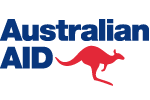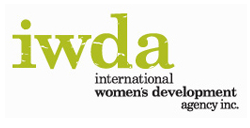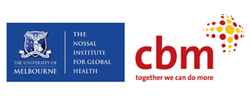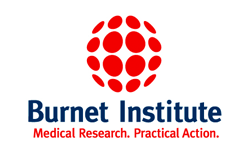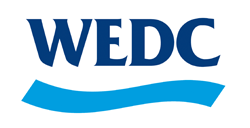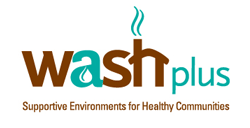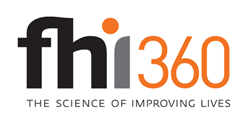Resource Library for Gender: Women and Girls
Web Resources
Menstrual hygiene matters is an essential resource for improving menstrual hygiene for women and girls in lower and middle-income countries. Nine modules and toolkits cover key aspects of menstrual hygiene in different settings, including communities, schools and emergencies. This resource was developed by WaterAid, SHARE and a number of collaborating organisations.
Women and girls with disabilities
The UN Enable site provides resources and links with a gender perspectives on disability and the disability perspective on the situation of women and girls with disabilities, including an on-line discussion group and network and a link to an interactive panel discussion on Cross-sectionalities of gender, disability, and development. Women and girls with disabilities experience double discrimination, which places them at higher risk of gender-based violence, sexual abuse, neglect, maltreatment and exploitation.
Kelsey, D. (2012). ACID Research in Development Series, Report no. 4. The resource reports on the findings of research conducted in June 2010 to assess the gendered outcomes of WaterAid’s WASH programming in two communities in the Liquica district of Timor-Leste. The research sought to understand what it would mean to address gender systemically in its work, and to develop policy and practice that better responds to gender concerns.
This 2016 Exploratory Study on Menstruation Management in Timor-Leste was commissioned by the BESIK program to gain insights to the factors that affect menstruation management among rural women in Timor-Leste. Insights gained from this research will be used to influence the design of sanitation programs.
Fisher, J. (2006). WSSCC: Geneva. The vital role of women in water, sanitation and hygiene (WASH) interventions is undeniable. But even though women’s involvement in the planning, design, management and implementation of such projects and programmes has proved to be fruitful and cost-effective, the substantial benefits of this approach are not properly recognised. One result is that, all too often, women are not as centrally engaged in water and sanitation efforts as they should be.
Includes references for a number of different gender analysis frameworks that can be useful in analysing and developing strategies to address gender issues in the development and WASH sector.
Isis International: Phillipines. This toolkit on Gender and Climate Change is part of an important endeavour by Isis International to explore innovative and strategic ways to communicate gender justice and climate justice issues, especially from Southern feminist perspectives.
Women in Cities International (2011). This document reports on the findings of the action research project Women’s Rights and Access to Water and Sanitation in Asian Cities; Carried out in Delhi, India from 1 February 2009 to 31 July 2011.
Grant, M., and Willetts, J. & Hugget, C. (2016). A Framing Paper for the High-Level Panel on Water, Australian Water Partnership. It explores how to promote gender equality in both water resources management and WASH, and by doing so, contribute to more sustainable and effective water management outcomes for all people, while decreasing the inequalities prevalent in many societies.
Water and Sanitation Program. (2010). Working Paper. For use by ministries, donors, citizens, development banks, NGOs and service providers. This paper looks at links between gender and WASH at the policy level, operational level, monitoring and evaluation, citizen engagement, behaviour change and HIV/AIDS. It showcases examples of good practice and provides checklists for practitioners.
Underhill-Sem, Y. (2011) Asia- Pacific Human Development Report Background Paper Series. This paper provides a deeper understanding of how culture in the Pacific impacts gender equality and human development. The analysis addresses two views that are widely held in the Pacific: 1) that gender is biologically determined, and 2) that culture is a sacred template should not be meddled with. Both these notions have attracted sound scholarly consideration in the Pacific, which has shown that rath
Reed, B.J. et al. (2007). WEDC, Loughborough University, UK. This guide is aimed at to engineers, technicians and project managers to ensure that the infrastructure and services they provide are suitable for whole communities. The resource has a special focus on awareness of gender issues.
Simpson, S. (2014). Water Supply & Sanitation Collaborative Council, Office of the High Commissioner for Human Rights. Focusing on access to WASH as a basic human right to be upheld by states, the paper looks at the reality of women in their ability to exercise this right in day-to-day life in India and Nepal. The paper focuses on females who who are subjected to further stigma, discrimination and inequity in their ability to access WASH facilities due to not confomring to social ideals within t
WaterAid Nepal (2009). This study looks at the perspectives and experiences of menstrual hygiene management among school girls in Nepal. It brings the issue to the attention of policy makers and practitioners, and makes recommendation on how capacity for effective menstrual hygiene management can be increased.
House, S. & Cavill, S. (2015). Frontier of CLTS: Innovations and Insights Issue 5, Brighton Institute of Development Studies. This handbook looks at the links between gender based harassment and violence and WASH facilities and programs. It looks at the implications of such harassment and violence, and puts-forth key principles and points for action that can be built in to CLTS programs to reduce vulnerabilities to harassment and violence.
Mahon, T. & Fernandes, M. (2010). WaterAid. Focussing on effective menstrual hygiene management, as a key aspect of WASH, this resource looks at examining related cultural and religious taboos, as well as male dominance in the development sphere, to overcome barriers to effective menstrual hygiene management. It provides examples of successful initiatives and programs that tackle menstrual hygiene in WASH in the South Asia region.
Carrard, N (2011) A snapshot of lessons from learning events on menstrual hygiene management (part of AusAID’s Learning Fund). During the learning events, participants talked about their efforts to break the silence, working with women and girls to ensure menstrual hygiene management needs are addressed through WASH programs.
Dayal, R., Wijk, C. & Mukherjee, N. (2000). A guide prepared by the Water and Sanitation Program (WSP) and IRC International Water and Sanitation Centre that offers practical tools for bringing gender and poverty-sensitive participation into WASH programs. The MetGuide is useful for communities, project staff, project managers, program designers, donors, researchers and policy makers.
This resource assesses existing knowledge on equity, equality and access to sanitation and hygiene services in relation to gender. It looks specifically at concepts of economic, social, spatial and political inequality and their significance in enabling or inhibiting access to sanitation and hygiene services. It puts-forth requirements to ensuring equitable access to sanitation and hygiene services that overcome structural inequalities, and provides guidance for direction of future research in t
The UN Special Rapporteur for human rights to water and sanitation has published a report on the links between gender equality, WASH and human rights.
Halcrow, G. et al. (2010). International Women’s Development Agency and Institute for Sustainable Futures, University of Technology, Sydney. This guide is to assist program and field staff involved in the design, implementation and/or evaluation of community-based WASH programs, to work effectively with both women and men. The guide references research on gender outcomes from rural water, sanitation and hygiene projects in Vanuatu and Fiji.
Pillitteri, S. (2011). In this briefing note on the SHARE website, WASH Consultant Sally Piper Pillitteri, answers a call from WaterAid for “evidence from the field”. She provides data on Menstrual Hygiene Management (MHM) for schoolgirls in Malawi, with a view to determining one or several recommendations for improved MHM in schools. This material is also of value to WASH professionals, policy makers, NGOs and education authority.
Balla, M. (2013). Engineers Without Borders Australia. This resource gives an overview of the issues women and girls in the developing world face, and how this relates directly to the provision of basic WASH facilities. It goes on to discuss the contingent impact this can have on the trajectory of women and girls; including issues such as gender based violence, education and low literacy levels, and increased crime rates, among other social issues.
International Bank for Reconstruction and Development / The World Bank (2016).
Jansz, S. & Wilbur, J. (2013). WSSCC and WaterAid.This resource gives a brief overview of some prominant gender issues in WASH, including: maternal and newborn health, girl’s education, menstrual hygiene, violence against women/dignity and self esteem, inequality and discrimination, economic empowerment, and women’s rights.
A brief hand-out guide to working effectively with women and men in WASH programs.
World International for Reconstruction and Development / The World Bank. (2011). The report’s authors underlines three dangerous phases in a woman’s life, girls at birth, birth to five years old and women of reproductive age and stresses the role of WASH at these times. This report has nine chapters in three parts.
This briefing note was written with WSSCC for the Women Deliver conference in 2013. It details how WASH can help women’s rights be realised and bring about gender equality.
Upcoming Events and News
-
Wednesday, September 19, 2018
Erick Baetings, senior sanitation specialist at IRC, discusses the eye-opening experience watching a group of Cambodian actors use their talent to portray the difficulties people with disability face when accessing…
